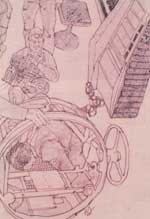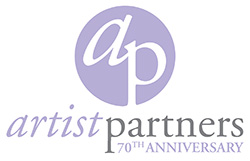Brian Sanders
The Independent Magazine
Saturday, 20th January 2001
Visitors were discouraged and photographers banned from the set of Stanley Kubrick’s ‘2001: A Space Odyssey’. One man, however, was given unparalleled access to record this epic in the making. Until now, the results have never been seen. Jojo Moyes on the work of illustrator Brian Sanders.
Life Through a Lens – “The flag was from the opening scenes — the bit where people are going to the moon with air hostesses, and this was the moon station. Stanley (centre) checked the setting of that camera at every single moment Geoff Unsworth. who is drinking coffee on the right was an amazing cameraman. He went on to work with Stanley on other films. He was the man who filmed Barry Lyndon, and Kubrick helped to design the lens that enabled them to film that practically by candlelight. Unsworth was an incredibly gentle, unaffected man and I was very impressed by him.”
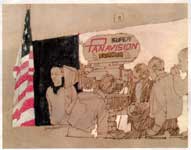
Full Metal Jacket – “I had a brief to cover the filming however I wanted, as long as I gave it to Stanley afterwards. So, often, I would do drawings or pictures on the set and then go back to my studio in Soho and make either larger-scale collages or paintings” says Sanders. This collage shows the exploration team venturing down the ramp of the moon pit. “I did this in the studio afterwards, using silver foil — very space age Stanley never expressed an opinion on individual pieces of work. None of his associates could tell me what he thought either. The works never appeared anywhere in the end – it was a terrible anti-climax. I understood how the actors in A Clockwork Orange felt when he withdrew it from show.”
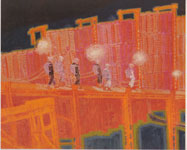
Eyes Wide Shut – “It was absolutely forbidden to take cameras on to the set especially on the day that Snowdon came in. Stanley didn’t want anyone taking photographs of Snowdon, which we felt was quite ironic, as he was a photographer himself. He was just visiting out of interest — I think he was a friend of Kubrick’s. In the year that I was there, there were not many VIPs on set but lots of known actors of the time. The actors — Keir Dullea, Gary Lockwood, William Sylvester and Robert Beatty — were almost throwaway people on the film, compared to the technology.”
Leonard Rossiter, who played Smyslov, later became one of Britain’s best known comedy actors.
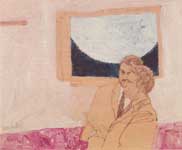
Remote Control – This, like the large moon pit, shows the scale of the sets Kubrick created. “The camera, which is mounted at the front of the centrifuge tube, is the thing that’s turning around while Keir Dullea walks forward. But because there’s no one with the camera, the men down at the bottom left are monitoring a TV screen so that Kubrick could direct remotely, from the bottom left.” Kubrick, in blue, is in the group to the right, Unsworth is to his right, with the balding head. “They’re all asking: ‘Is it OK? Shall we come down?’ to the man who’s looking at the camera image. It shows the intricacies of how every shot was put together.”
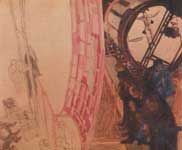
Hard-Hat Area – When the actors were wearing their space helmets, they were actually breathing compressed air from a bottle, because otherwise everything would have steamed up under the lights on set. Although it took a long time to do so, the actors were very eager to get in and out of the helmets; I think they saw them as a bit of a drag. There was a radio fitted in each one to give them direction. I thought they were rather strange compared to normal space helmets, but they were beautifully designed — the astronauts would have had almost 180o vision.”
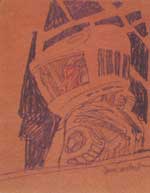
Word Perfect – “The actor William Sylvester played Dr Heywood R Floyd, one of the astronauts going to the moon to inspect the monolith. One day, on set, he didn’t have very much to say but he had evidently had some emotional disturbance at home, and wasn’t really himself— I don’t know what it was. But Stanley was so patient Sylvester had a few lines and Stanley took him gently through them, and he did it word perfect — before then, he hadn’t been able to actually get the words out. Any other director would have probably torn his hair out.”
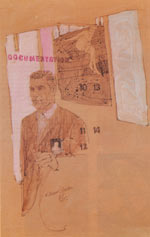
Downtime – “Because it could take so long to get in and out of the suits, the astronauts tended to keep them on for whatever else they were doing. I loved the guy on the left having a smoke in his. The continuity woman (far right) would look after the actors card hands when they went back to the set. There was always a lot of waiting around [of the three years it took to make 2001, a year was spent on preparation, a year and a half on shooting special effects, and only six months working with actors] and there was a little group of people who would be together… It reminds me of when I later worked on the poster for the film ‘Oh What a Lovely War’, where all the ‘officer’ actors would a lineup together, away from the ‘men’.”
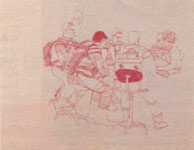
Top Secret – This illustration shows how the camera was set up for the famous centrifuge scene. “The day they set up the centrifuge scene, I was told I wasn’t allowed to do pictures of it because Stanley didn’t want anyone to see how it worked, that it was the camera that went around rather than the centrifuge. It was an enormous wheel, which must have been a good 35ft high, on an axis that turned, and lights were mounted all around it. When they first started it up, the lights started to explode because the leads got caught. It was quite a hairy moment Gary Lockwood, who played one of the astronauts, just ran on the spot while the camera went round and round him. There was an escape route for him to get off quickly if anything happened, but from where I was sitting it looked like quite a brave thing to do”
